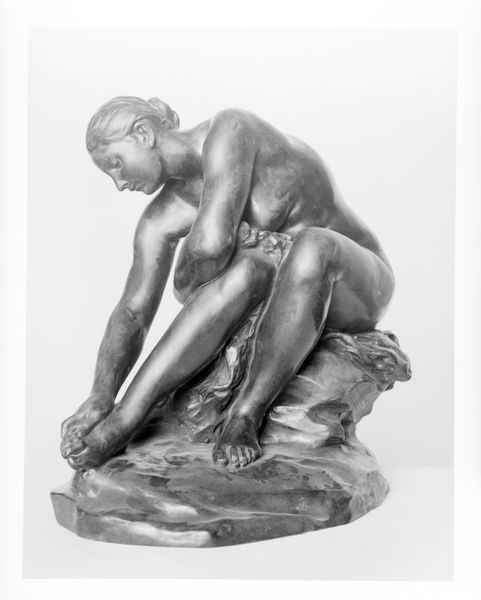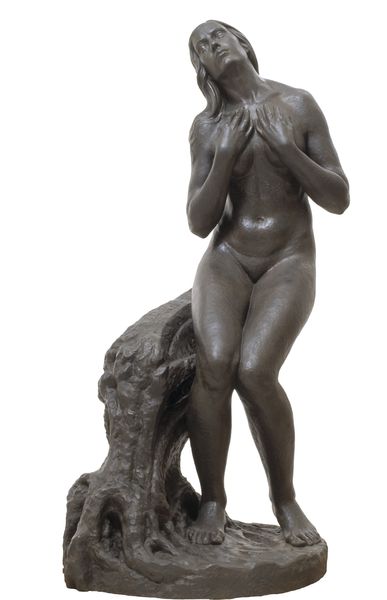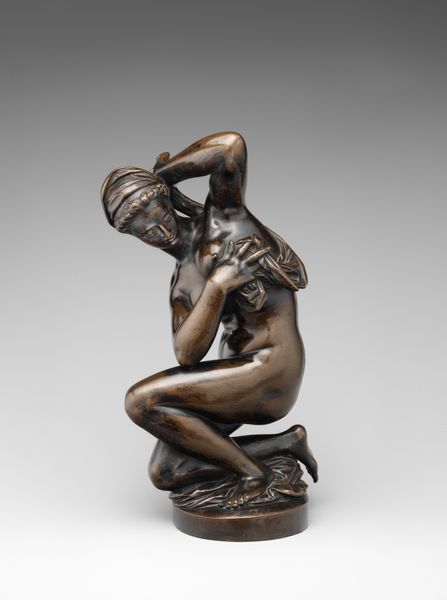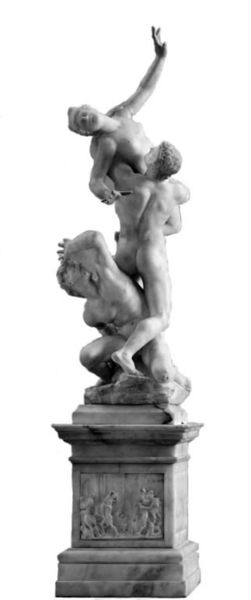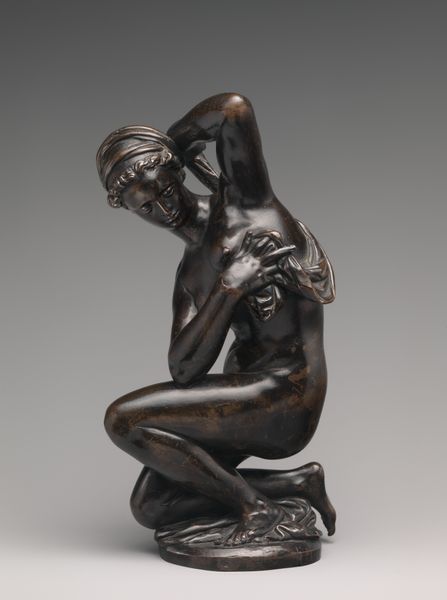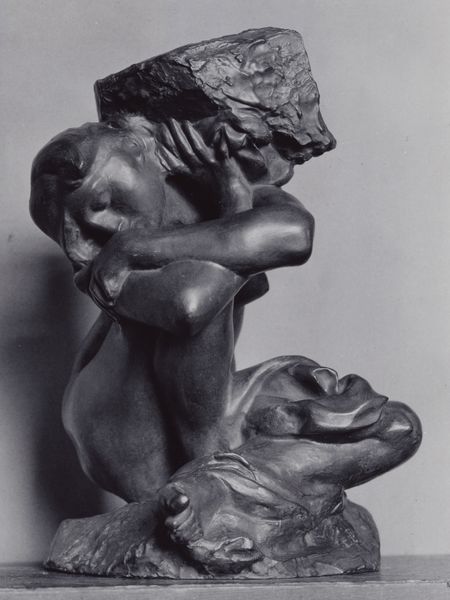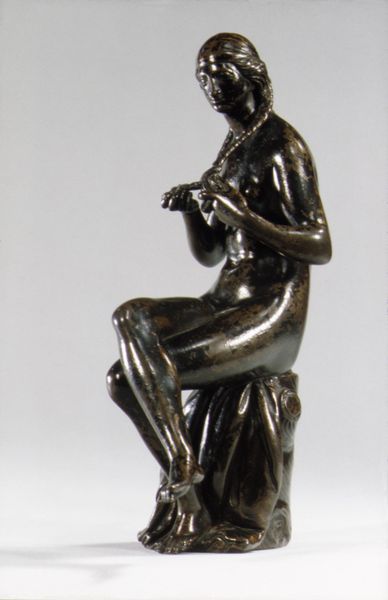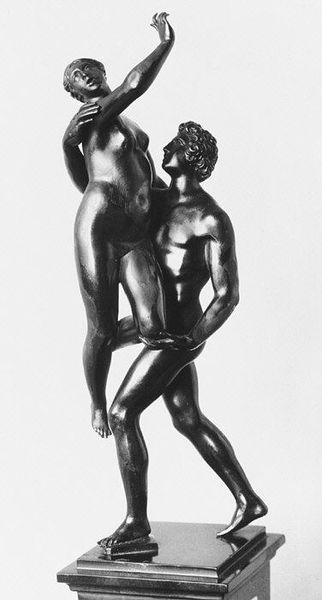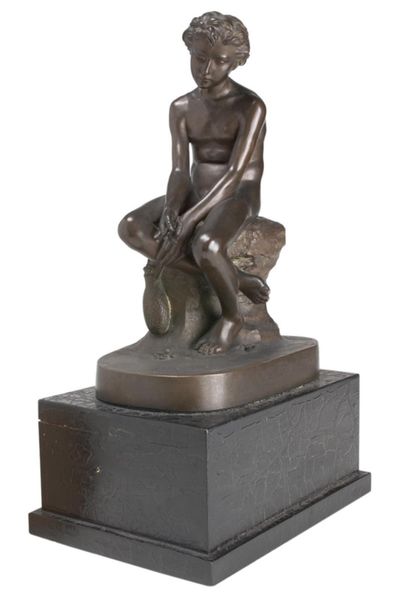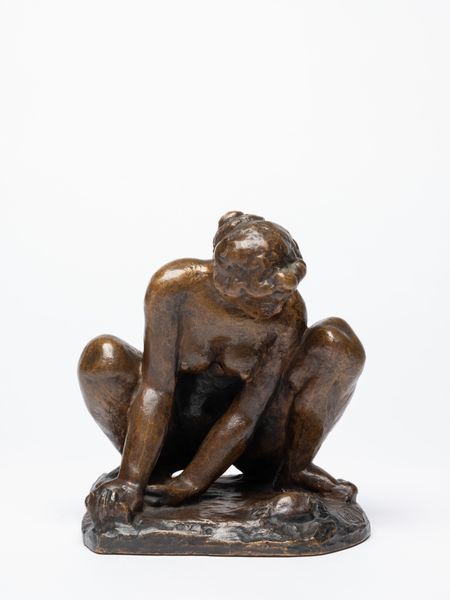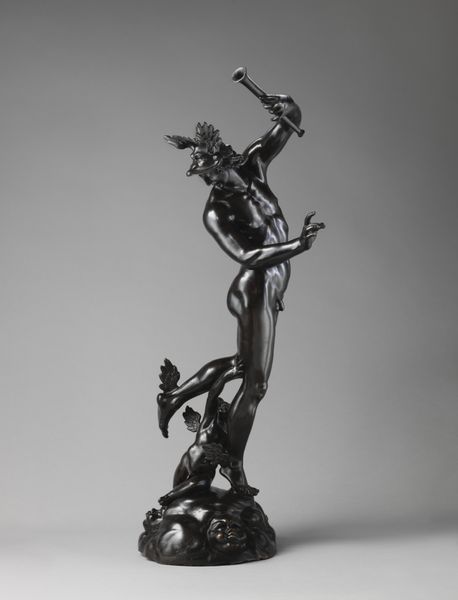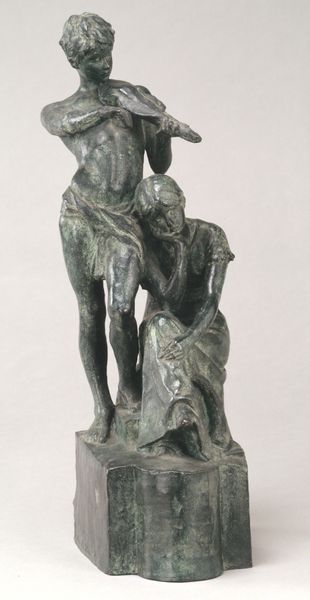
bronze, sculpture
#
allegory
#
sculpture
#
bronze
#
mannerism
#
figuration
#
cupid
#
sculpture
#
decorative-art
#
nude
Dimensions: 5 × 2 3/4 in. (12.7 × 7 cm)
Copyright: Public Domain
Editor: So this is "Venus and Cupid" by Giambologna, dating from 1585 to 1615. It's a bronze sculpture, and my first impression is of a certain formality, but the interaction between the figures feels very intimate. What's your perspective on this piece? Curator: What I see here is an intersection of idealized beauty and the realities of its production. The bronze itself speaks volumes. Consider the mining of the ore, the labor involved in smelting and casting, the skill required for the chasing and finishing of the surface. The smoothness, the gleam – they mask a process deeply embedded in resource extraction and human effort. Editor: That's interesting. I was thinking more about the figures themselves and the Mannerist style. Curator: But shouldn't we think about how Mannerism itself reflects a shift in patronage and workshop practice? The move away from naturalism often signaled a growing awareness of the artist's individual skill. How does the bronze material facilitate the exaggeration of form so typical of the Mannerist style? Editor: So you are saying the artist makes it clear that the bronze in its creation becomes almost as important as Venus or Cupid. Curator: Exactly! The very idea of creating these idealized forms depends on access to materials and a skilled workshop. And consider its destination in the decorative art section – does it reinforce a separation between the "high art" of painting and the "applied art" of sculpture? Who commissioned it, and what social role did it play within its intended setting? Was it purely for aesthetic pleasure, or did it also serve as a symbol of wealth and power? Editor: That makes me rethink the piece entirely. I initially saw it as a mythological scene, but now I see it as this symbol of material production and the patron's own place in that system. Thank you for this materialist perspective on art! Curator: Absolutely! Understanding the social and material circumstances around "Venus and Cupid" makes for a more complete understanding of art.
Comments
No comments
Be the first to comment and join the conversation on the ultimate creative platform.
